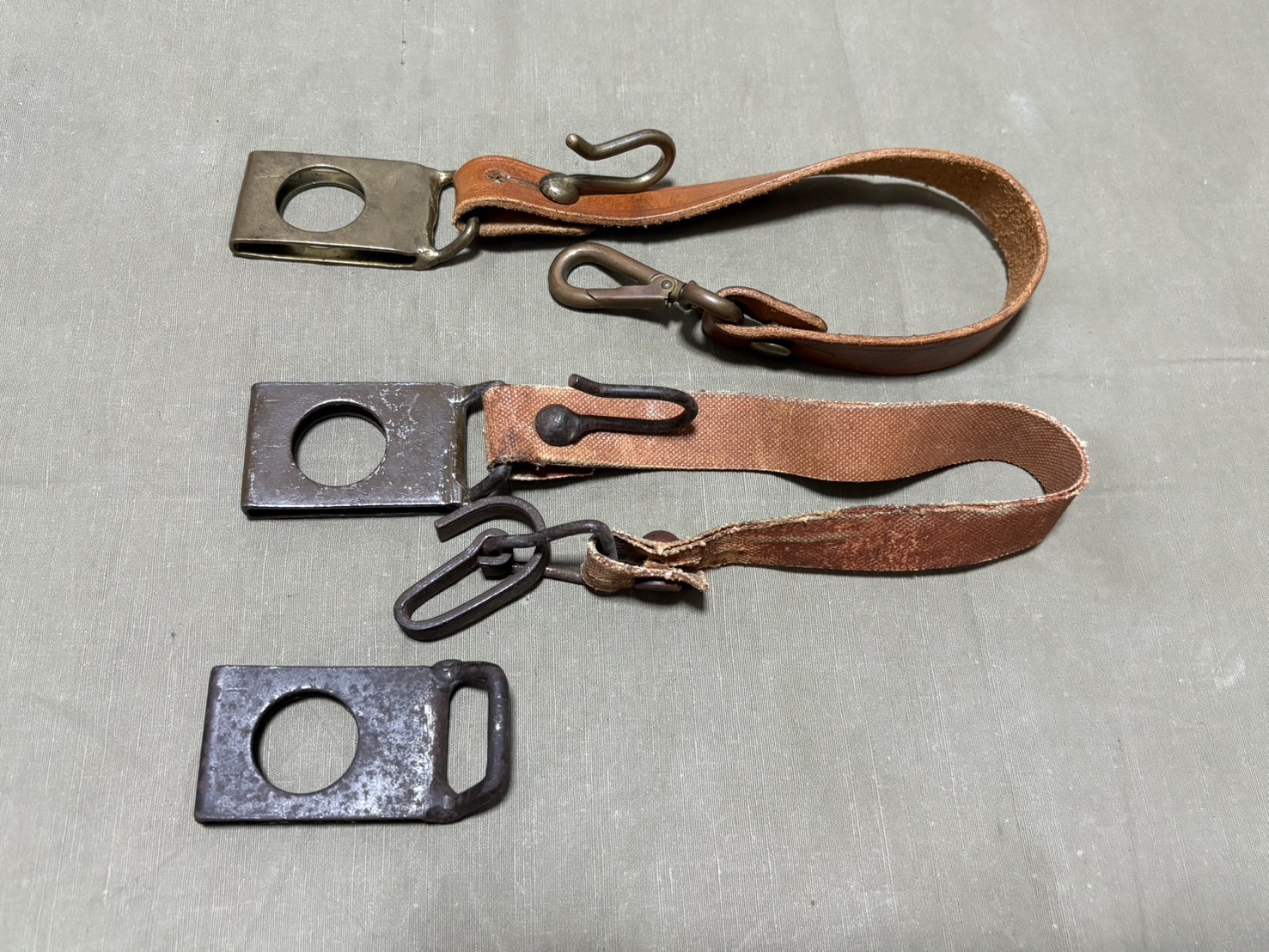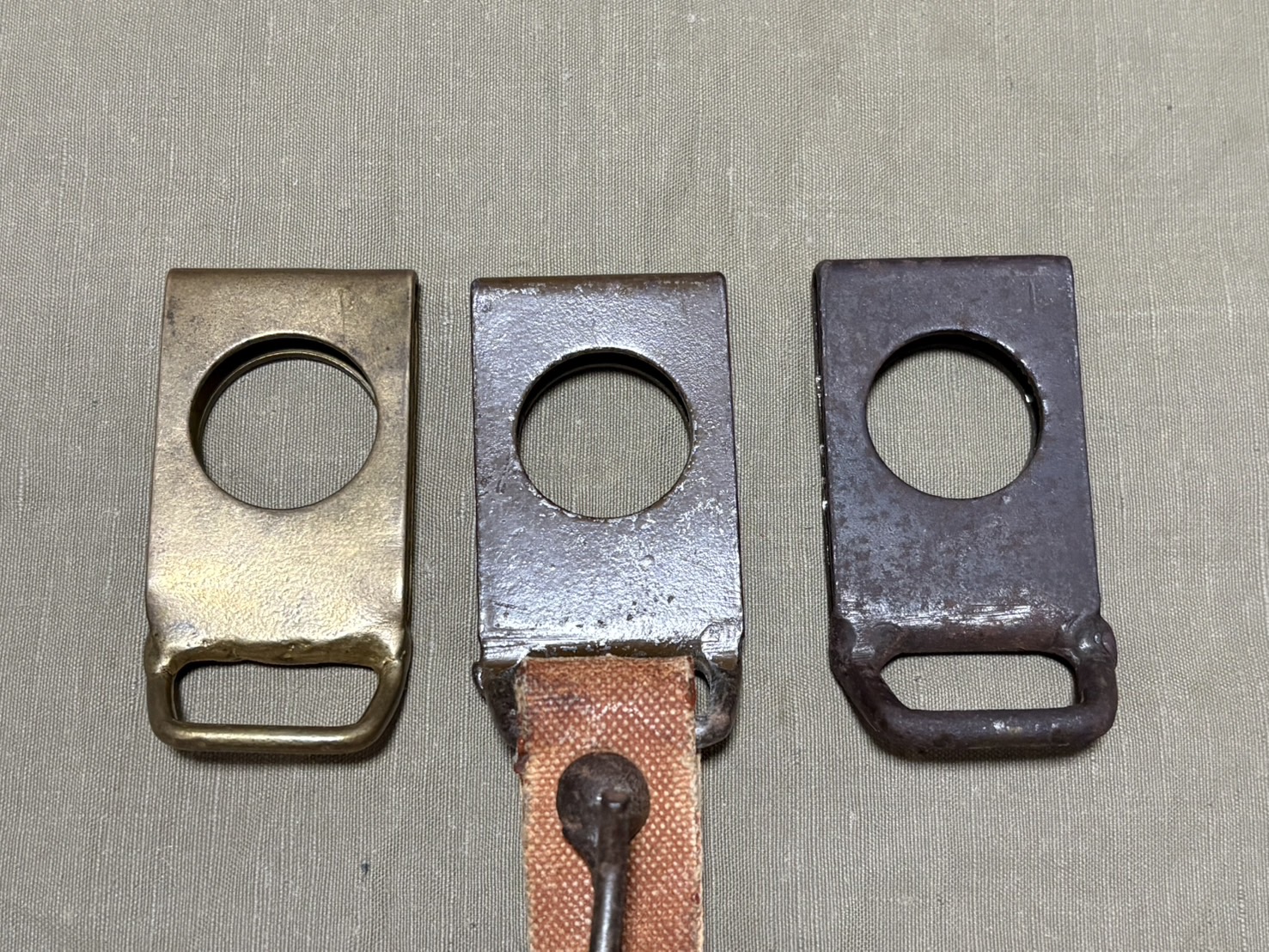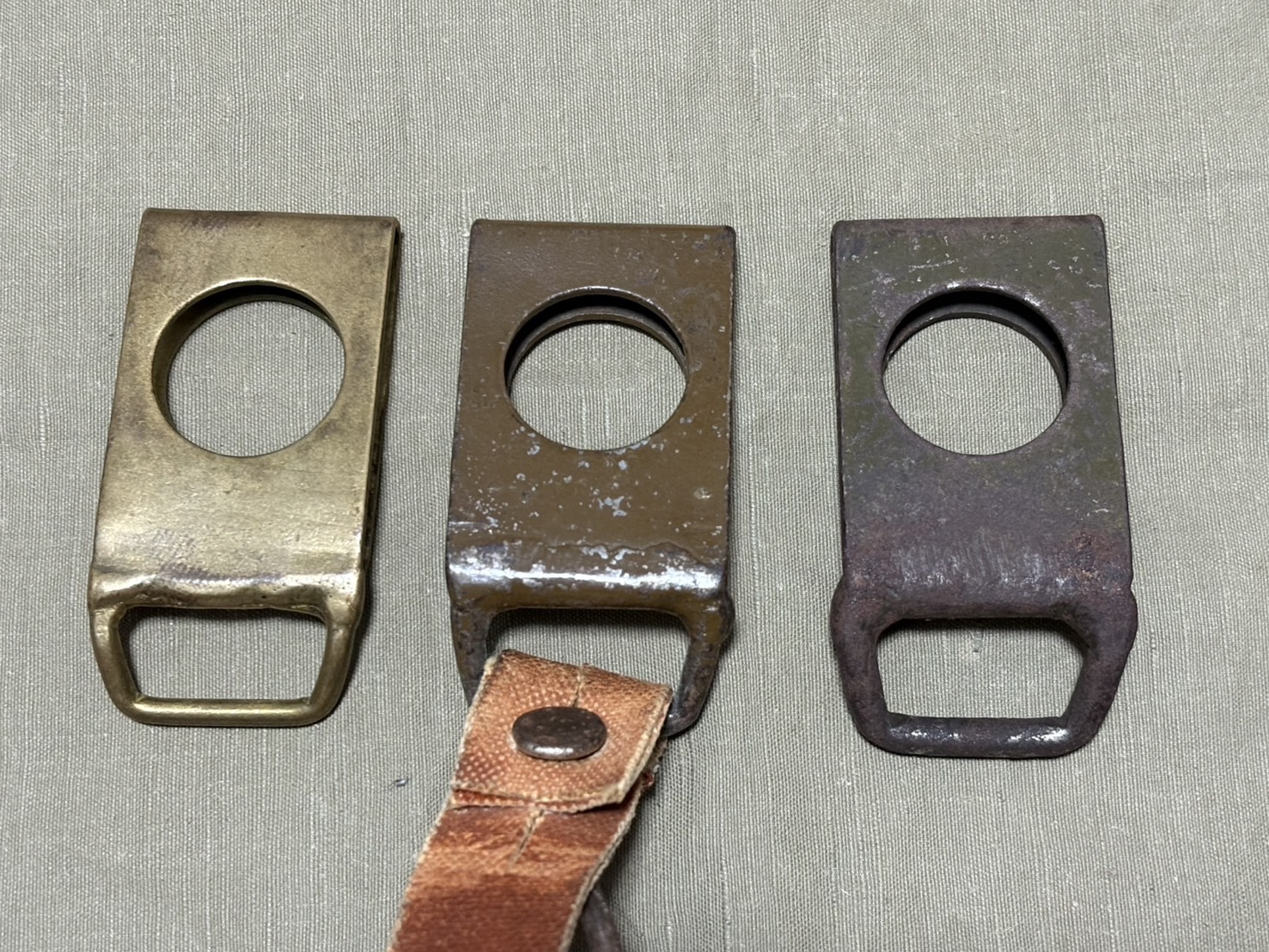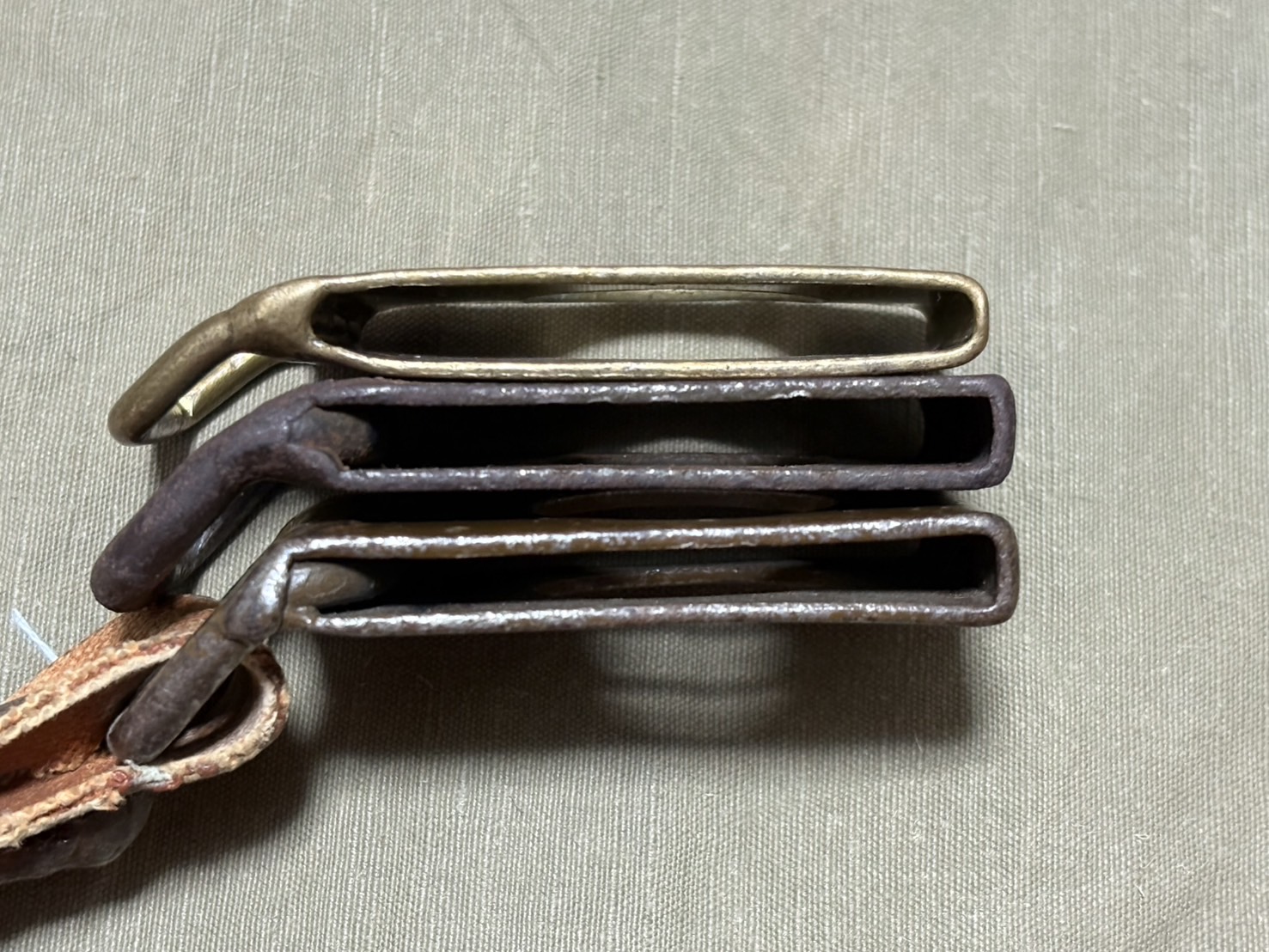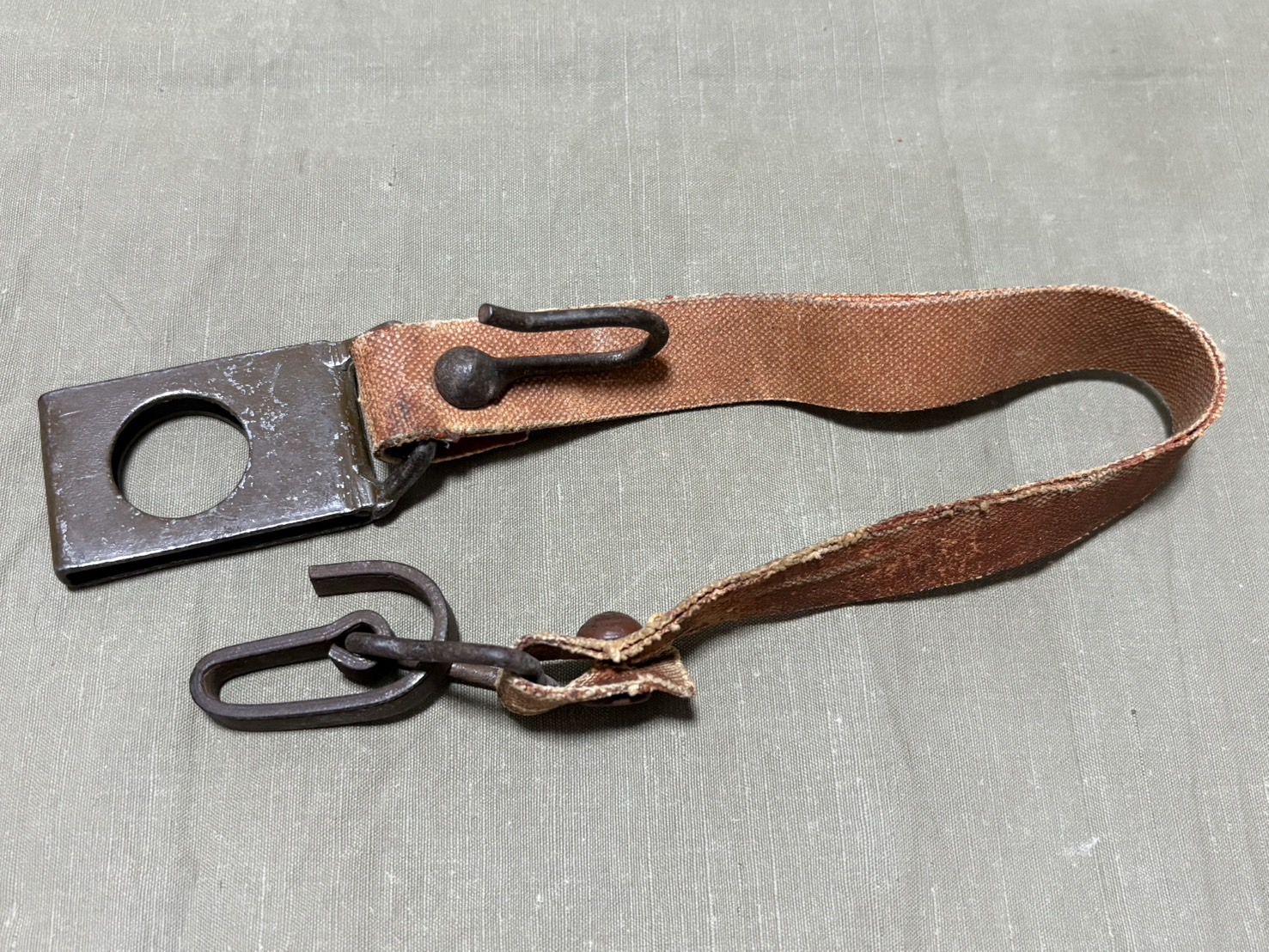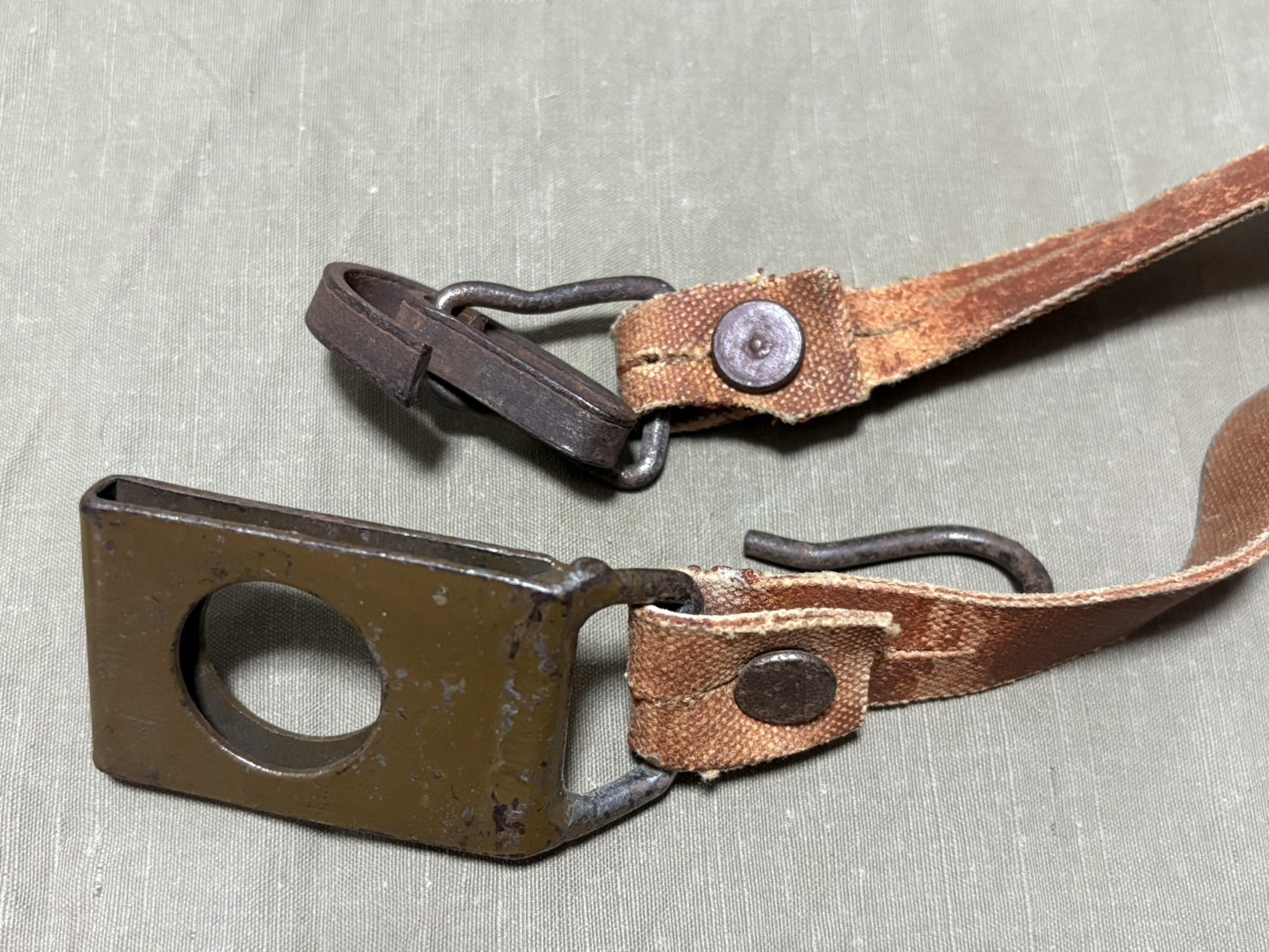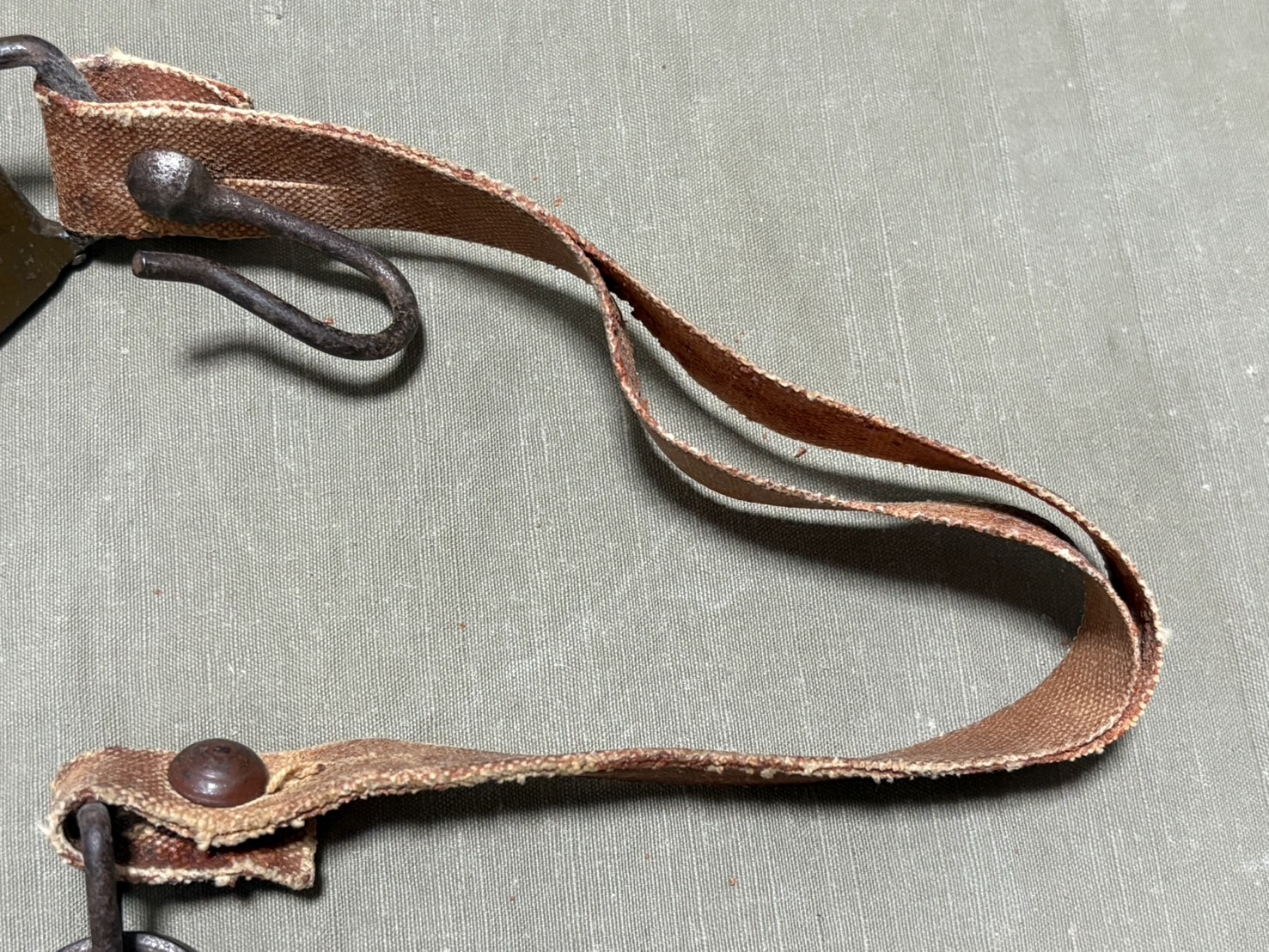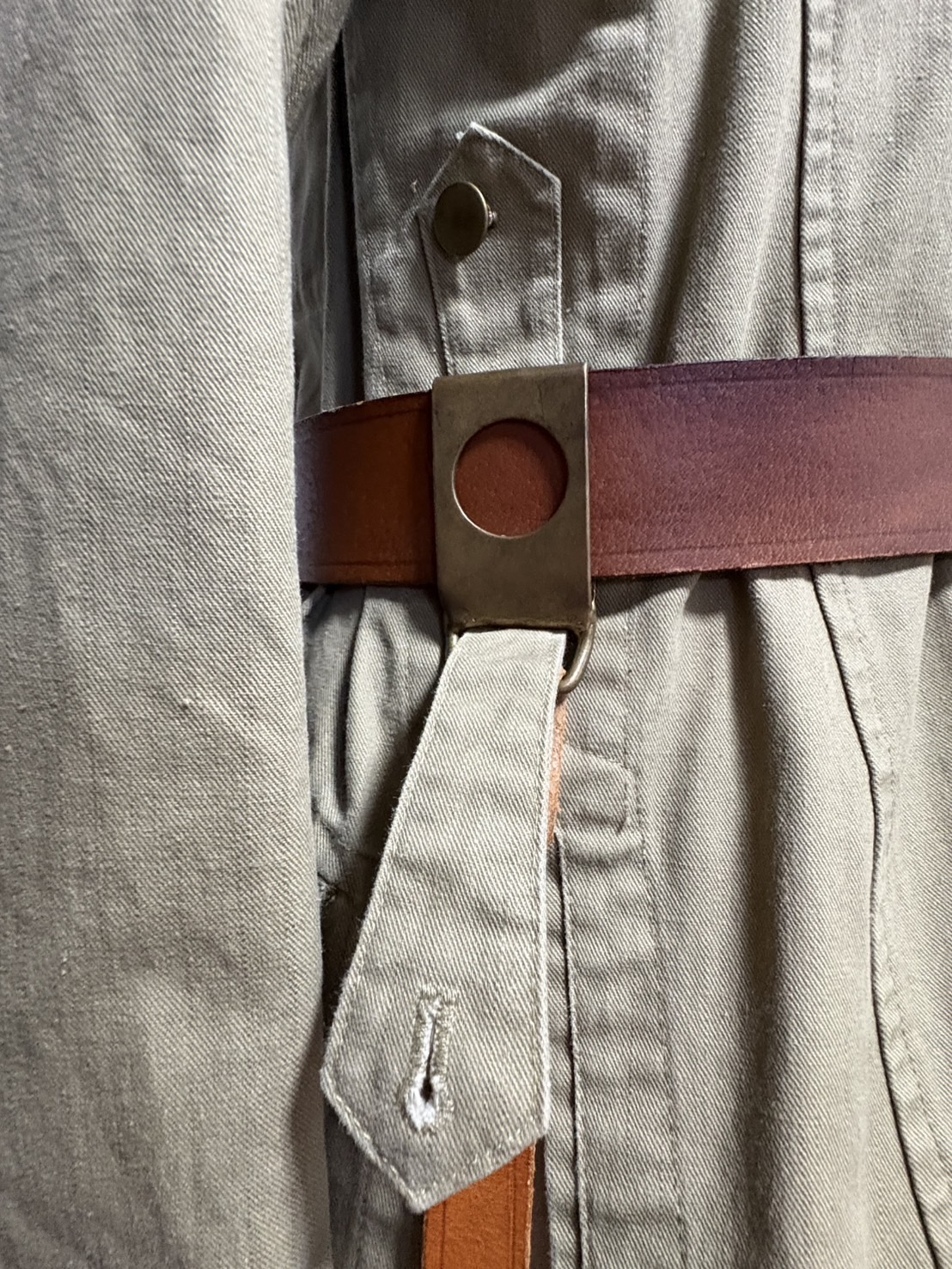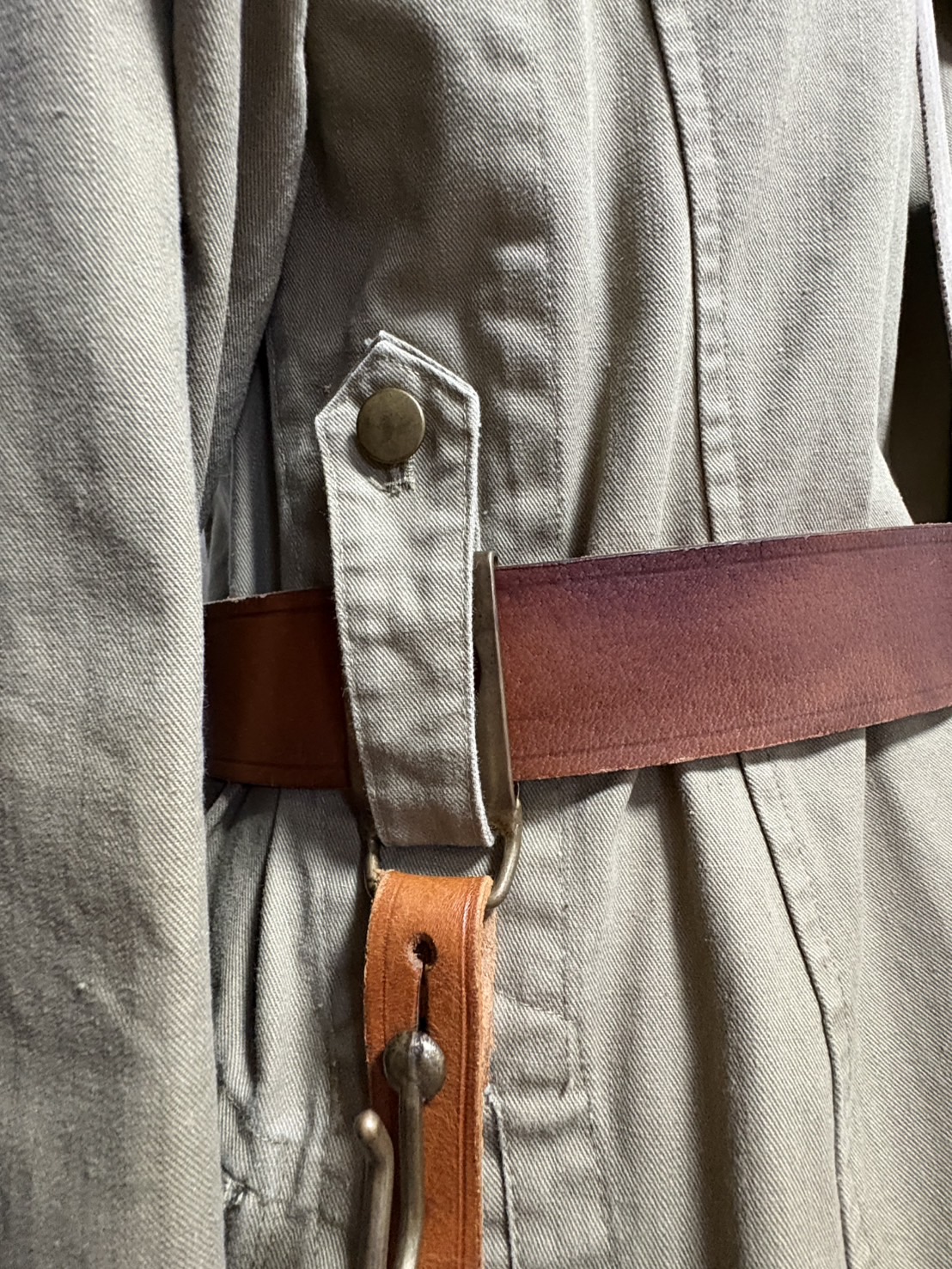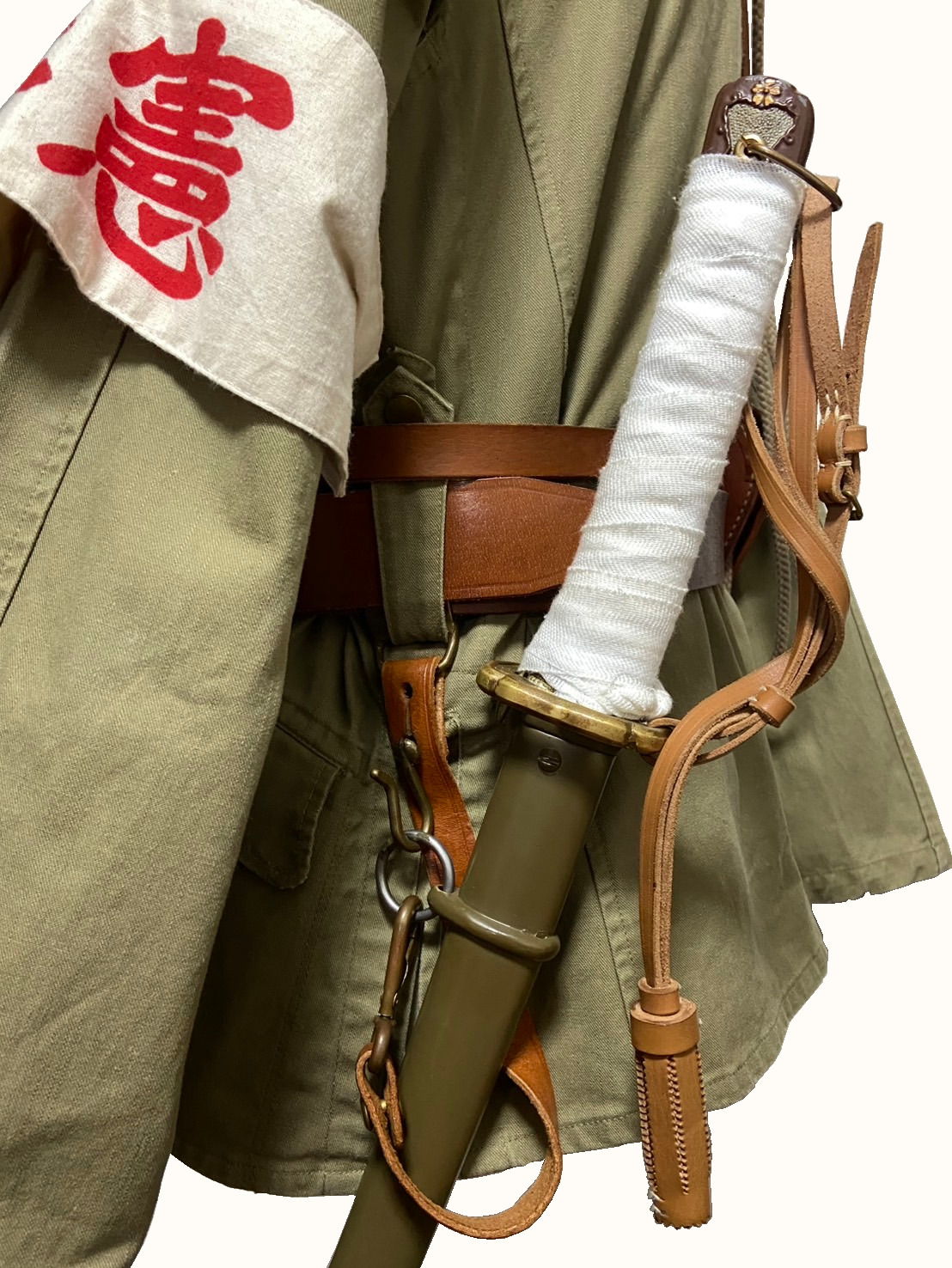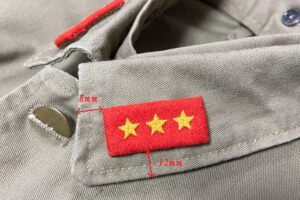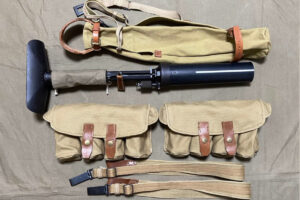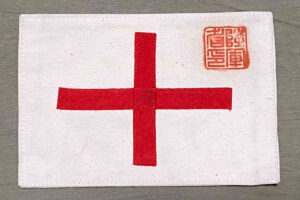This time, I’d like to introduce the Hinomaru Ring and Sword Hanger Belt used by soldiers authorized to carry swords, specifically those who were classified as sword-bearing enlisted personnel. Among non-commissioned officers and enlisted men, the following types were typically permitted to carry swords:
- Cavalry NCOs and enlisted men (from Private Second Class upward)
- Transport Troops NCOs and enlisted men (from Private Second Class upward)
- Military Police NCOs and enlisted men (from Private First Class upward)
- Infantry NCOs assigned to regimental or battalion headquarters
- Senior NCOs at the rank of Sergeant Major (Sōchō)
However, there are numerous examples of NCOs and enlisted men in the field—those deployed to active combat zones—carrying privately-owned swords even if they didn’t meet the official criteria. Some brought family heirloom swords refitted into military-style mounts. I’ve even seen period photos of medics wearing swords.
Therefore, when recreating the field uniform of a frontline soldier, wearing a sword is not inappropriate. As Japanese, it’s only natural to want to wear a sword, isn’t it?
Comparison Between Authentic Items and a Replica
The top one is a replica, while the two below it are authentic. I believe I purchased the replica on Yahoo Auctions, but the manufacturer is unknown. It is different from the one made by HIKISHOP. It appears to be a foreign-made replica modeled after the version sold by Nakata Shōten.
The middle one is not made of leather, but of rubberized compressed canvas. Although it has hardened somewhat, it is still in usable condition. The bottom item was obtained with only the Hinomaru Ring.
The differences in shape are minimal—almost within the margin of error, I’d say. Since these aren’t modern industrial products, even authentic items likely show slight variations. The one in the middle is painted in Army khaki, similar to the color of steel helmets and canteens, while the one on the right is painted in a dark green shade. Painting the replica would likely make it look more authentic as well.
As for materials, the replica is made of brass, whereas the authentic ones are made of iron. Not only the Hinomaru Ring, but also the hook and button fastener (tsuzumi-botan) are iron.
Details of the Rubberized Compressed Canvas Sword Hanger Belt. The hook and other metal fittings also appear to have been painted. The button fastener (tsuzumi-botan) retains a clean coat of reddish-brown paint.
The belt seems to be made by laminating two layers of rubberized canvas. The middle section is starting to come apart, which clearly reveals its construction.
I found this piece while passing by the PK Militaria booth at the recent V-Show and bought it on the spot. It was a bit pricey, but considering that it would be hard to get one this cheap on auction sites, I think it was a great find.
How to Use the Hinomaru Ring
When NCOs and enlisted men wore a sword, they would thread a metal fitting called the Hinomaru Ring through their waist belt and attach the sword hanger belt. True to its name, the Hinomaru Ring features a round hole resembling the Japanese flag. Once the ring is passed through the belt, it is secured by threading it through the sword suspension loop on the uniform.
